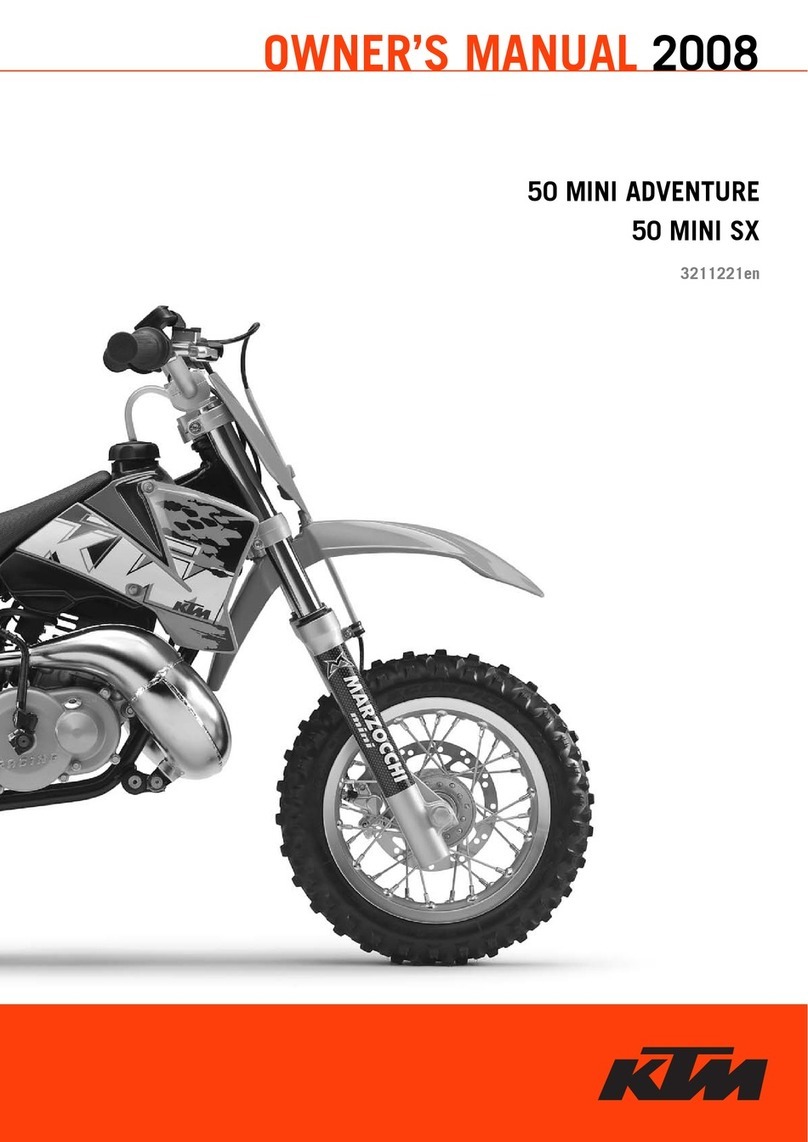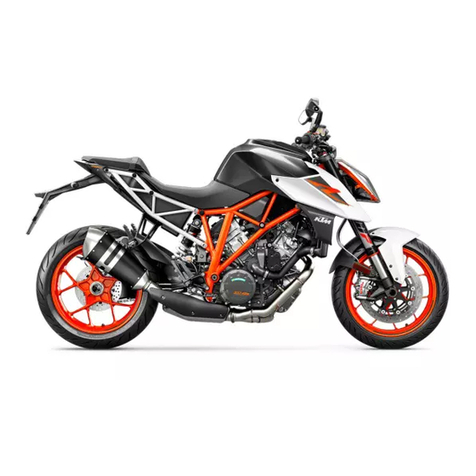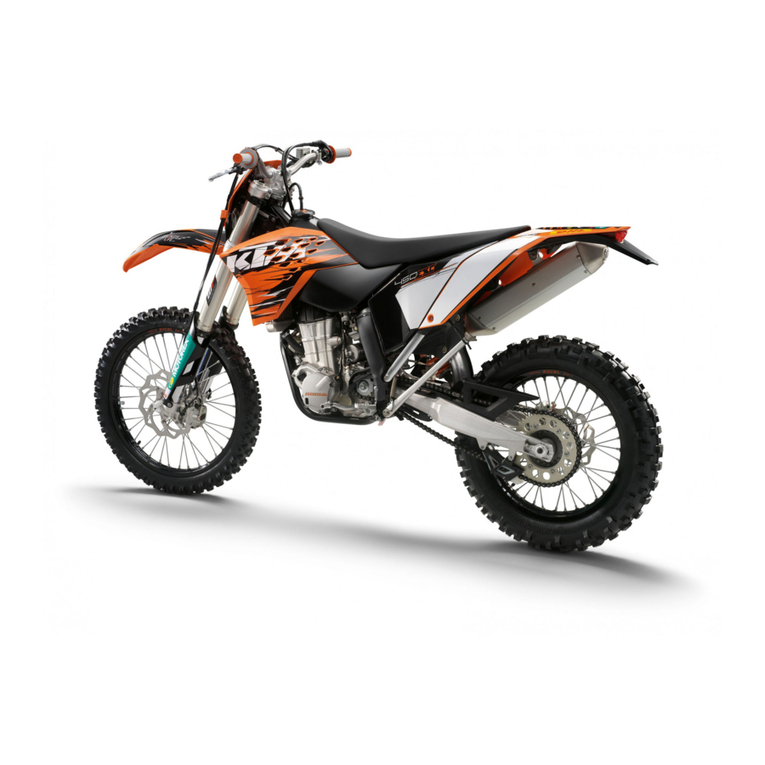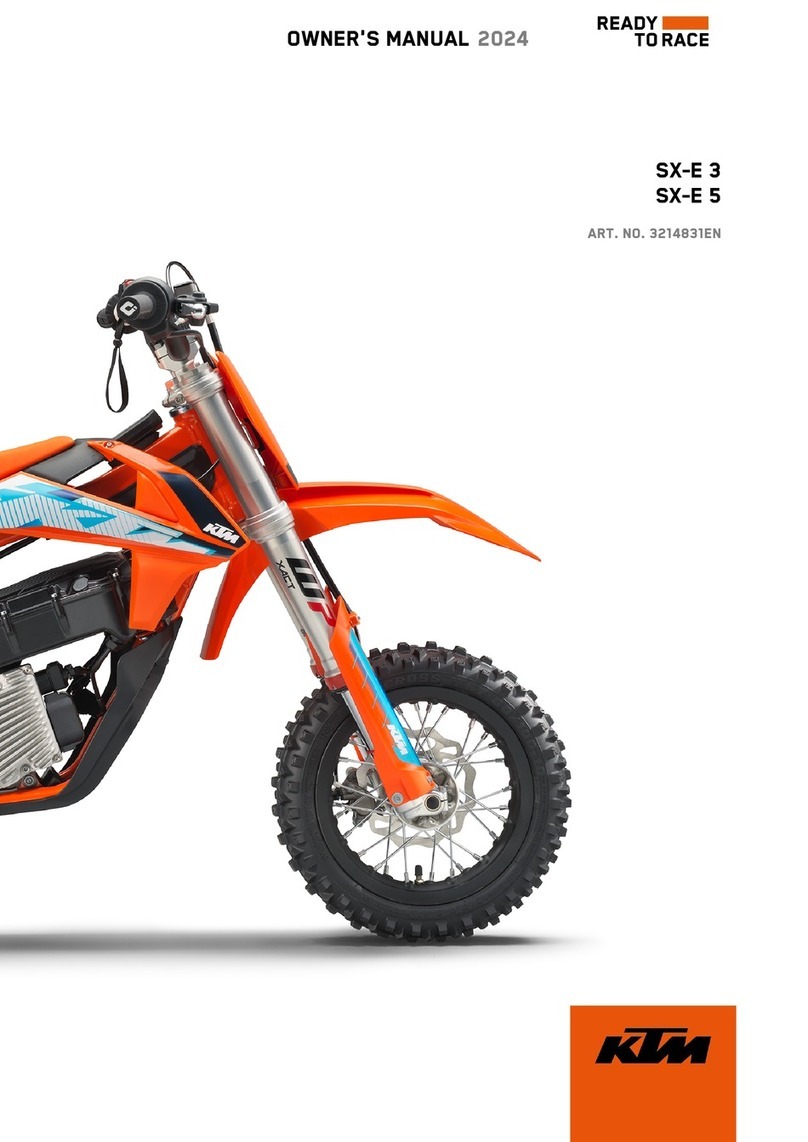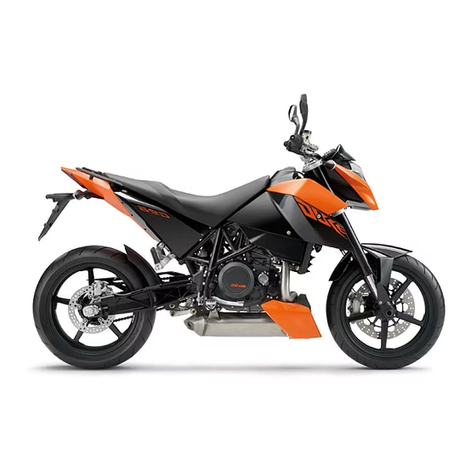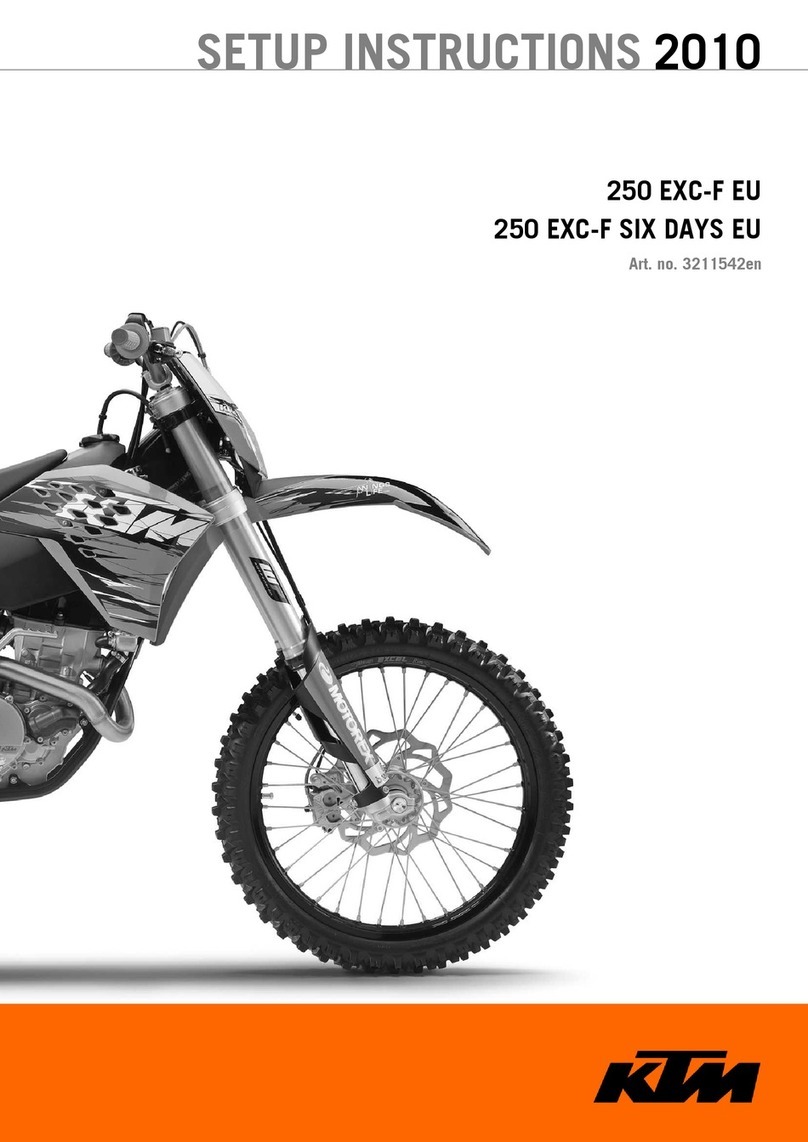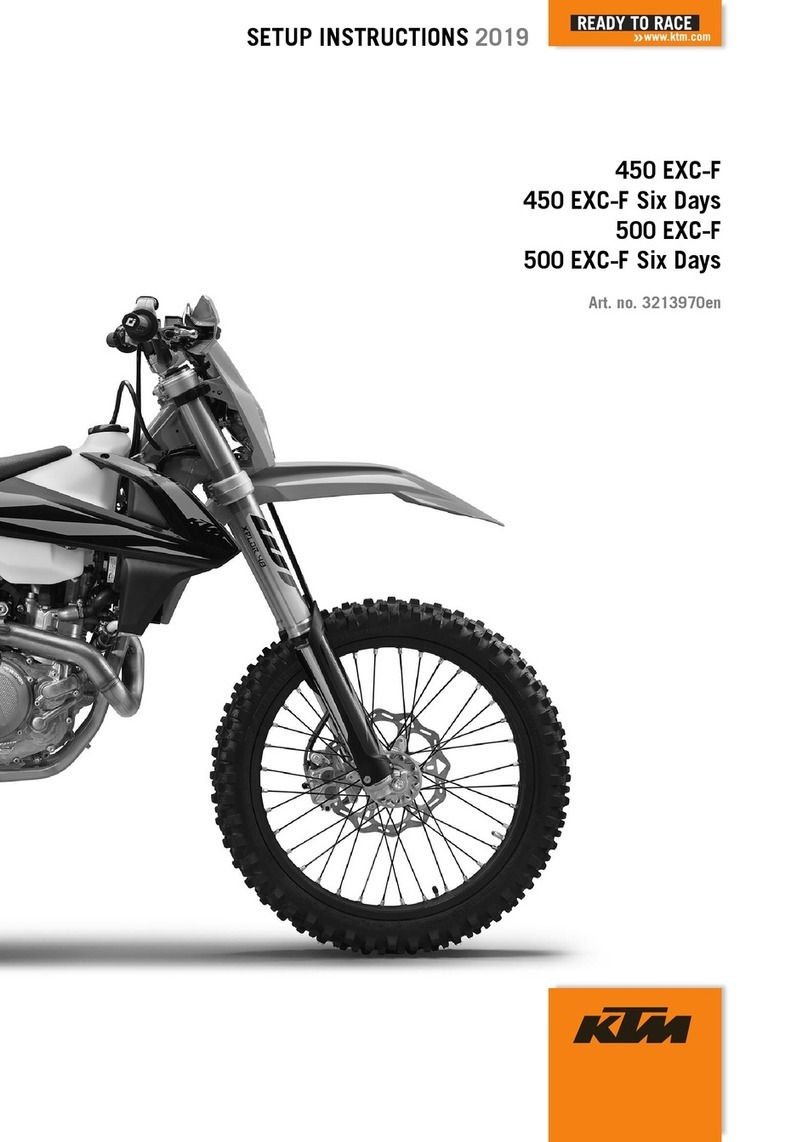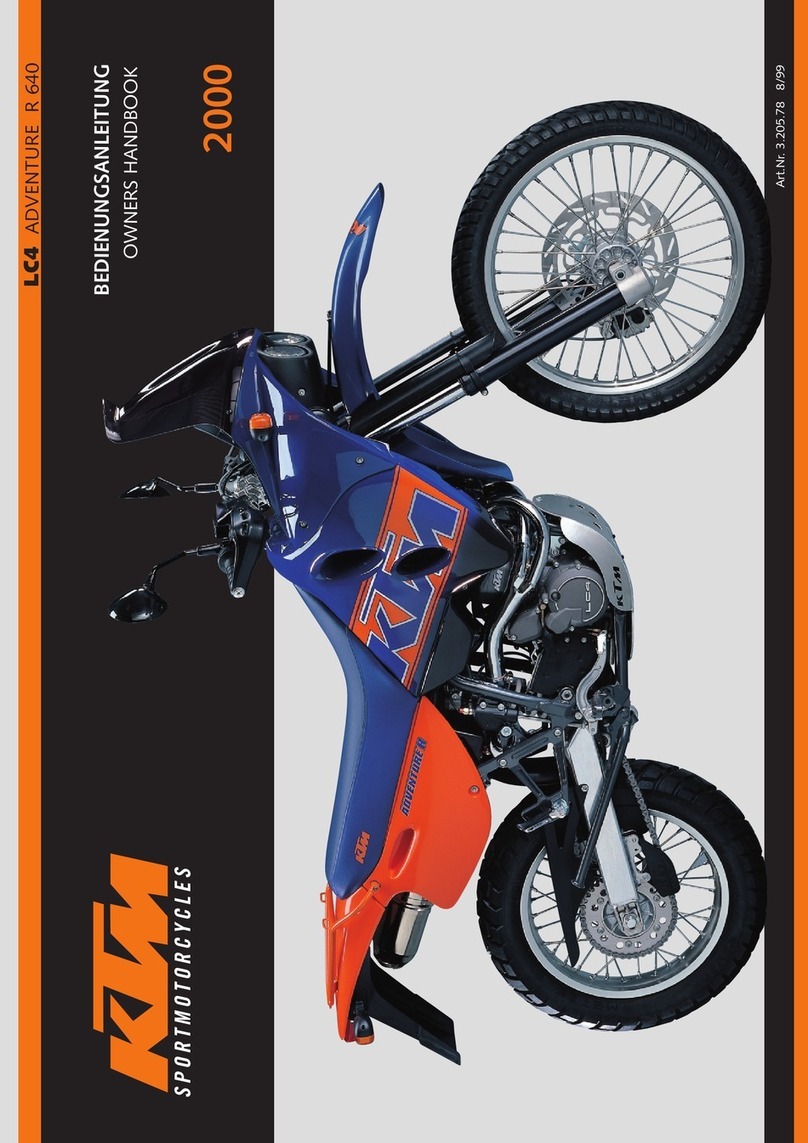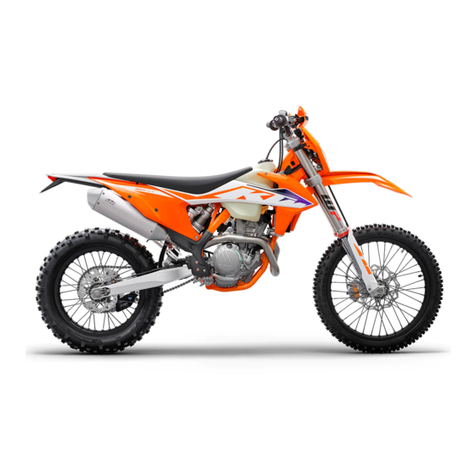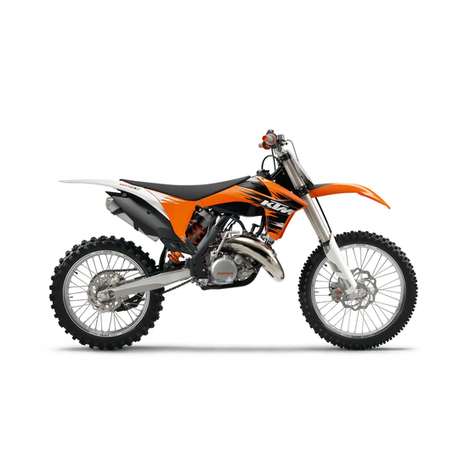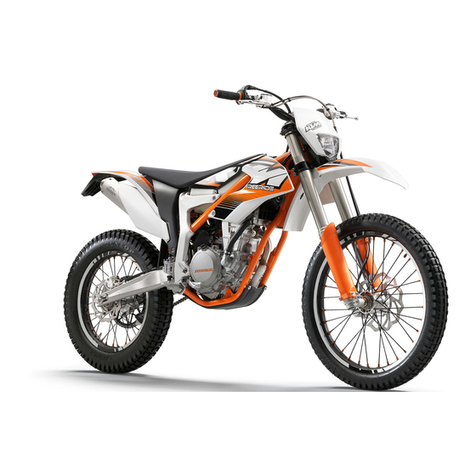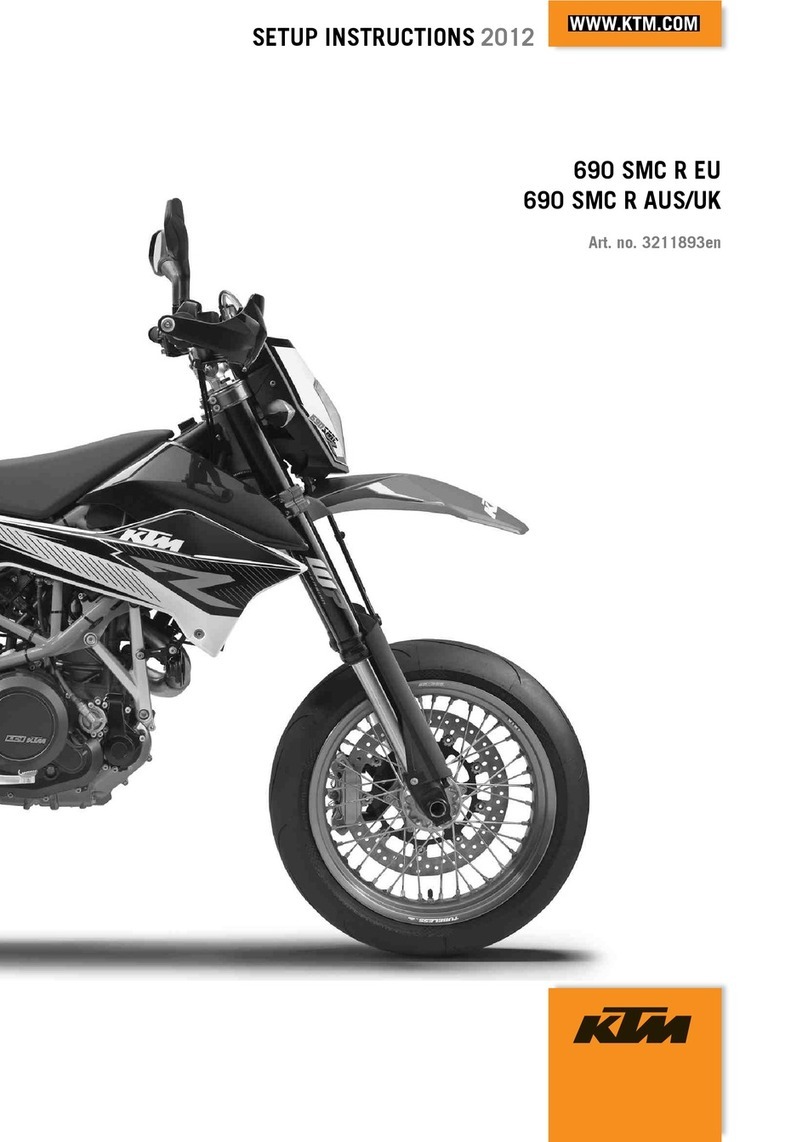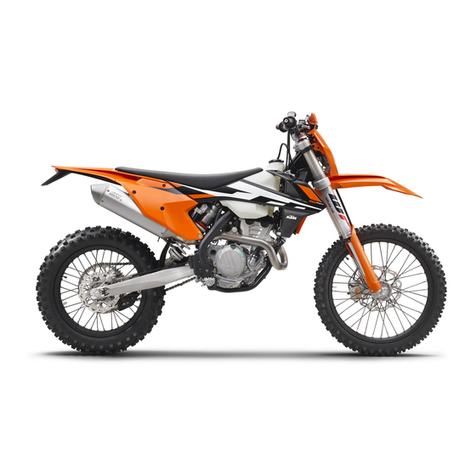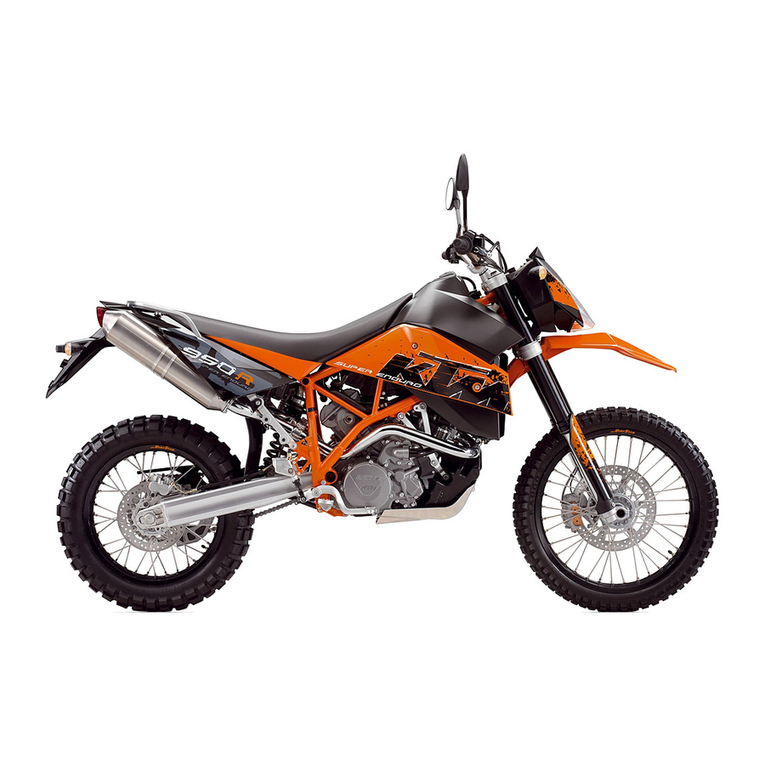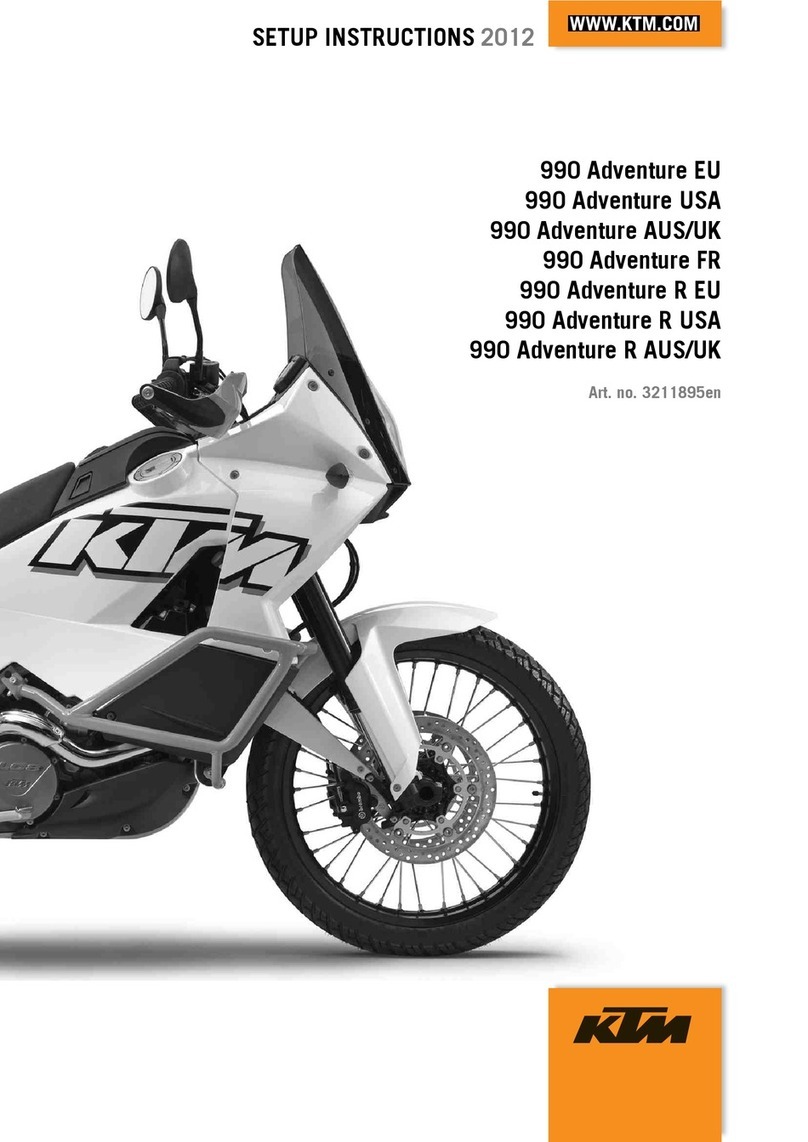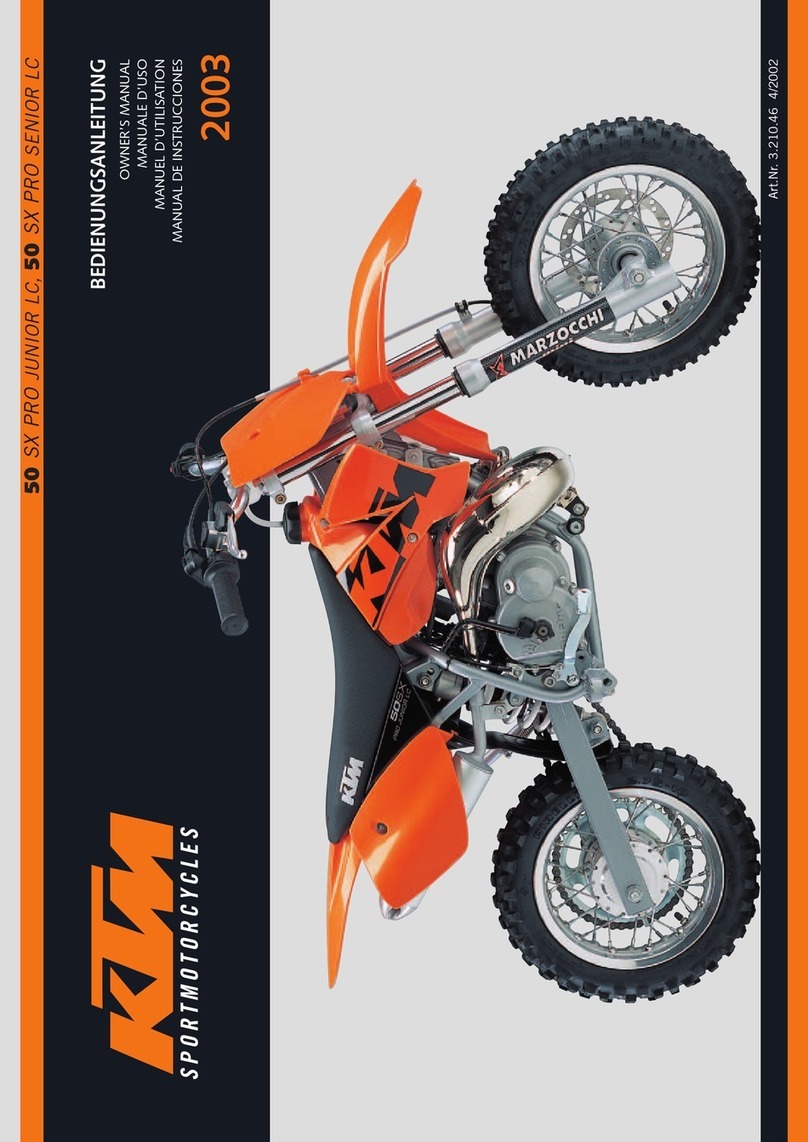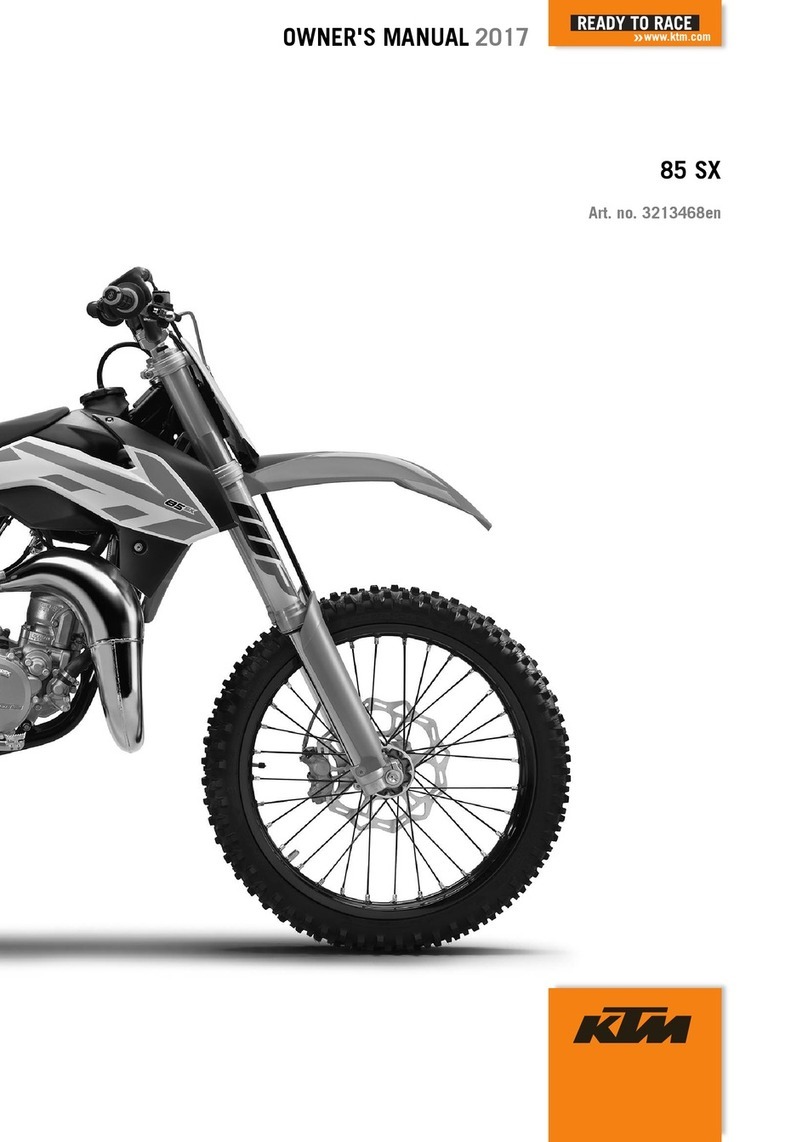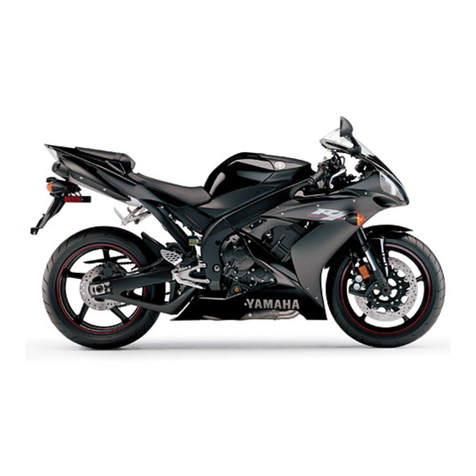ENGLISH
4
Page
SERIAL NUMBER LOCATIONS . . . . . . . . . . . . . . . . . . . . . .5
Chassis number . . . . . . . . . . . . . . . . . . . . . . . . . . . . . . .5
Engine number, Engine type . . . . . . . . . . . . . . . . . . . . .5
OPERATION INSTRUMENTS . . . . . . . . . . . . . . . . . . . . . . .5
Clutch lever . . . . . . . . . . . . . . . . . . . . . . . . . . . . . . . . .5
Hand decompression lever . . . . . . . . . . . . . . . . . . . . . .5
Hand brake lever . . . . . . . . . . . . . . . . . . . . . . . . . . . . . .5
Indicator lamps . . . . . . . . . . . . . . . . . . . . . . . . . . . . . . .6
Electronic speedometer . . . . . . . . . . . . . . . . . . . . . . . . .6
Tripmaster switch . . . . . . . . . . . . . . . . . . . . . . . . . . . . .7
Setting the clock . . . . . . . . . . . . . . . . . . . . . . . . . . . . . .9
Kilometers or miles . . . . . . . . . . . . . . . . . . . . . . . . . . . .9
Activating/deactivating the display modes . . . . . . . . .10
Combination switch . . . . . . . . . . . . . . . . . . . . . . . . . .11
Flasher switch . . . . . . . . . . . . . . . . . . . . . . . . . . . . . . .11
Emergency OFF switch (Australia) . . . . . . . . . . . . . . . .11
Filler cap . . . . . . . . . . . . . . . . . . . . . . . . . . . . . . . . . . .11
Fuel tap . . . . . . . . . . . . . . . . . . . . . . . . . . . . . . . . . . . .11
Choke . . . . . . . . . . . . . . . . . . . . . . . . . . . . . . . . . . . . .12
Hot start device . . . . . . . . . . . . . . . . . . . . . . . . . . . . . .12
Shift lever . . . . . . . . . . . . . . . . . . . . . . . . . . . . . . . . . .12
Kickstarter . . . . . . . . . . . . . . . . . . . . . . . . . . . . . . . . . .12
Foot brake pedal . . . . . . . . . . . . . . . . . . . . . . . . . . . . .12
Handlebar lock . . . . . . . . . . . . . . . . . . . . . . . . . . . . . .13
Compression damping of fork . . . . . . . . . . . . . . . . . . .13
Rebound damping of fork . . . . . . . . . . . . . . . . . . . . . .13
Compression damping of shock absorber . . . . . . . . . .13
Rebound damping of shock absorber . . . . . . . . . . . . .13
GENERAL TIPS AND WARNINGS FOR STARTING THE
MOTORCYCLE . . . . . . . . . . . . . . . . . . . . . . . . . . . . . . . .14
Instructions for initial operation . . . . . . . . . . . . . . . . . .14
Running in the LC4 models . . . . . . . . . . . . . . . . . . . . .14
Accessories and payload . . . . . . . . . . . . . . . . . . . . . . .14
DRIVING INSTRUCTIONS . . . . . . . . . . . . . . . . . . . . . . . .15
Check the following before each start . . . . . . . . . . . . .15
Starting when the engine is cold . . . . . . . . . . . . . . . . .16
Starting when the engine is warm or hot . . . . . . . . . . .16
What to do when the engine is “flooded” . . . . . . . . .16
Starting off . . . . . . . . . . . . . . . . . . . . . . . . . . . . . . . . .16
Shifting/Riding . . . . . . . . . . . . . . . . . . . . . . . . . . . . . .16
Braking . . . . . . . . . . . . . . . . . . . . . . . . . . . . . . . . . . . .17
Stopping and parking . . . . . . . . . . . . . . . . . . . . . . . . .17
Fuel . . . . . . . . . . . . . . . . . . . . . . . . . . . . . . . . . . . . . . .17
PERIODIC MAINTENANCE SCHEDULE 2004 . . . . . . . . . .18
MAINTENANCE WORK ON CHASSIS AND ENGINE . . . .20
Removal of seat . . . . . . . . . . . . . . . . . . . . . . . . . . . . .20
Tool set . . . . . . . . . . . . . . . . . . . . . . . . . . . . . . . . . . . .20
Check and adjust steering head bearing . . . . . . . . . . . .21
Breather plug front fork . . . . . . . . . . . . . . . . . . . . . . .21
Cleaning the dust sleeves of the telescopic fork . . . . . .21
Basic suspension setup for the weight of the driver . . .22
Changing the spring preloading of the shock absorber 23
Checking rubber ring on the WP rear shock absorber .24
Lubricate rear suspension linkage . . . . . . . . . . . . . . . .24
Checking chain tension . . . . . . . . . . . . . . . . . . . . . . . .24
Page
Correct chain tension . . . . . . . . . . . . . . . . . . . . . . . . .25
Chain maintenance . . . . . . . . . . . . . . . . . . . . . . . . . . .25
Chain wear . . . . . . . . . . . . . . . . . . . . . . . . . . . . . . . . .25
General information about KTM disc brakes . . . . . . . .26
Changing the basic position of the handbrake lever . .27
Checking of brake fluid level - front brake . . . . . . . . .27
Refilling the front brake fluid reservoir . . . . . . . . . . . .27
Checking the front brake pads . . . . . . . . . . . . . . . . . .27
Replacing the front brake pads . . . . . . . . . . . . . . . . . .28
Check the rear brake fluid level . . . . . . . . . . . . . . . . .28
Refilling the rear brake fluid reservoir . . . . . . . . . . . . .28
Changing the basic position of the brake pedal . . . . . .29
Checking the rear brake pads . . . . . . . . . . . . . . . . . . .29
Replacing the rear brake pads . . . . . . . . . . . . . . . . . . .29
Dismounting and mounting the front wheel . . . . . . . .30
Dismounting and mounting the rear wheel . . . . . . . . .30
Tires, air pressure . . . . . . . . . . . . . . . . . . . . . . . . . . . .31
Checking spoke tension . . . . . . . . . . . . . . . . . . . . . . .31
Checking the shock absorption rubbers in the rear hub 31
Check/set distance of the magnetic sensor . . . . . . . . .32
Replacing the battery in the electronic speedometer . .32
Replacing the fan fuse . . . . . . . . . . . . . . . . . . . . . . . . .32
Replacing headlight lamp/parking light lamp . . . . . . .33
Exchanging the brake light and tail light bulb . . . . . . .33
Cooling system . . . . . . . . . . . . . . . . . . . . . . . . . . . . . .34
Checking the coolant level . . . . . . . . . . . . . . . . . . . . .34
Cleaning of air filter . . . . . . . . . . . . . . . . . . . . . . . . . .35
Exhaust system . . . . . . . . . . . . . . . . . . . . . . . . . . . . . .35
Adjusting the throttle cable . . . . . . . . . . . . . . . . . . . . .36
Checking the adjustment of the hand decompression cable 36
Changing the original position of the clutch lever . . . .36
Checking the oil level of the hydraulic clutch . . . . . . .37
Bleeding of the hydraulic clutch . . . . . . . . . . . . . . . . .37
Draining the float chamber of the carburetor . . . . . . .37
Carburator – Adjust idling . . . . . . . . . . . . . . . . . . . . . .38
Adjusting the mixture control screw . . . . . . . . . . . . . . .38
Checking the float level (float height) . . . . . . . . . . . . .38
Engine oil . . . . . . . . . . . . . . . . . . . . . . . . . . . . . . . . . .39
Checking the engine oil level . . . . . . . . . . . . . . . . . . . .39
Oil circuit . . . . . . . . . . . . . . . . . . . . . . . . . . . . . . . . . .39
Oil and screen filter change, bleeding of the oil system 40
Changing oil filter . . . . . . . . . . . . . . . . . . . . . . . . . . . .41
TROUBLE SHOOTING . . . . . . . . . . . . . . . . . . . . . . . . . . .42
CLEANING . . . . . . . . . . . . . . . . . . . . . . . . . . . . . . . . . . . .44
CONSERVATION FOR WINTER OPERATION . . . . . . . . .44
STORAGE . . . . . . . . . . . . . . . . . . . . . . . . . . . . . . . . . . . . .44
RE-INITIATION AFTER TIME OF STORAGE . . . . . . . . . . .44
TECHNICAL SPECIFICATIONS – ENGINE 660 SMC . . . .45
TECHNICAL SPECIFICATIONS – CHASSIS 660 SMC . . .46
HEAD WORD INDEX . . . . . . . . . . . . . . . . . . . . . . . . . . . .48
WIRING DIAGRAMME . . . . . . . . . . . . . . . . . . . .APPENDIX
Index

